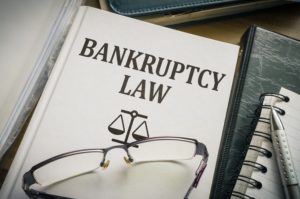 Section 303(b)(1) of the Bankruptcy Code provides, in relevant part, that “[a]n involuntary case against a person is commenced by the filing with the bankruptcy court of a petition under chapter 7 or 11 of this title – (1) by three or more entities, each of which is * * * a holder of a claim against such person that is not contingent as to liability or the subject of a bona fide dispute as to liability or amount * * * if such noncontingent, undisputed claims aggregate at least $16,750 more than the value of any lien on property of the debtor securing such claims held by the holders of such claims.” In addition, Section 303(h) of the Bankruptcy Code provides that an order for relief may be entered upon an involuntary petition if the debtor is generally not paying its debts as they become due. It contains the qualification that the determination of “generally not paying” excludes debts that are subject to a bona fide dispute as to liability or amount. A dispute exists among the courts as to whether a creditor with a claim only partially disputed as to the amount, can be a petitioning creditor under Section 303, or whether its claim can be included in the Section 303(h) analysis.
Section 303(b)(1) of the Bankruptcy Code provides, in relevant part, that “[a]n involuntary case against a person is commenced by the filing with the bankruptcy court of a petition under chapter 7 or 11 of this title – (1) by three or more entities, each of which is * * * a holder of a claim against such person that is not contingent as to liability or the subject of a bona fide dispute as to liability or amount * * * if such noncontingent, undisputed claims aggregate at least $16,750 more than the value of any lien on property of the debtor securing such claims held by the holders of such claims.” In addition, Section 303(h) of the Bankruptcy Code provides that an order for relief may be entered upon an involuntary petition if the debtor is generally not paying its debts as they become due. It contains the qualification that the determination of “generally not paying” excludes debts that are subject to a bona fide dispute as to liability or amount. A dispute exists among the courts as to whether a creditor with a claim only partially disputed as to the amount, can be a petitioning creditor under Section 303, or whether its claim can be included in the Section 303(h) analysis.
The majority of courts that have addressed or commented on the issue have concluded that any dispute as to amount (whether implicating the statutory threshold or not) renders a creditor ineligible. See, e.g., In re Regional Anesthesia Associates, PC, 360 B.R. 466, 470 (Bankr.W.D.Pa.2007) (finding that any dispute regarding the amount that arises from the same transaction and is directly related to the underlying claim renders the claim subject to a bona fide dispute); In re Bimini Island Air, 370 B.R. 408 (Bankr.S.D.Fla.2007) (opining that “bona fide dispute” is characterized in a new way making “a dispute as to the amount of the debt claimed apparently sufficient to render a petitioning creditor ineligible.”); In re Vicor Techs, Inc., 2013 WL 1397460, at *5 (Bankr.S.D.Fla.) (stating it is “generally accepted” that a dispute as to any portion of a claim is a bona fide dispute, “even if some dollar amount would be left undisputed.) Fustolo v. 50 Thomas Patton Drive, LLC, 816 F.3d 1 (1st Cir.2016) came to the same conclusion. Declining to read a materiality requirement into Section 303, the court stated:
As discussed above, the bona fide dispute provision strikes a balance between the Bankruptcy Code’s dual purposes of ensuring the orderly disposition of creditors’ claims and protecting debtors from coercive tactics. Limiting petitioning creditors to only those claims that are of undisputed value is in line with those aims. Accordingly, and in the absence of persuasive contrary authority or illuminating legislative history, we follow the straightforward reading of section 303, which places no qualifiers on the requirement that any asserted claim be free of “bona fide dispute as to … amount.”
Id. at 10.
The court in In re QDOS, Inc., 591 B.R. 843 (Bankr.C.D.Cal.2018) also reached this conclusion. The court explained:
If a claim is disputed as to liability, then the entire amount of the claim is disputed. If a claim is disputed as to “amount,” this implies that less than the entire amount is disputed. If the rule were otherwise – that is, if the entire amount had to be disputed to make the claim disputed as to amount – then the word “amount” in the statute would be redundant because it would mean the same thing as “liability.” In construing a statute, a federal court is obliged to give effect, if possible, to every word Congress used.
Id. at 848.
Citing to a statement from Senator Max Baucus found in the Congressional Record with respect to 1984 amendments to the Bankruptcy Code, the court stated that the legislative history showed that from the inception, Congress intended that a bona fide dispute as to either liability or the amount of a claim would be sufficient to disqualify the creditor holding such claim from qualifying as a petitioning creditor in an involuntary case.
However, QDOS noted that on an even more basic level, the proposition “a partially disputed claim is a disputed claim” “is not only true, it is necessarily true.” Id. at 849-50. The court stated that it would be contradictory to deny that a partially disputed claim is nonetheless a disputed claim. It stated that “[t]he word ‘dispute’ includes within it various degrees, just like the term ‘bald.’ If a creditor sent a debtor an invoice for $1,000, and the debtor wrote back that he owed only $600, it is properly said that the invoice is in dispute.” The court found that it would be palpably false to state under these circumstances that the invoice is not in dispute. Id. at 850.
In order for a bona fide dispute to exist, the alleged debtor must do more than just disagree with the amount of the claim. Rather, the court must determine whether there is “an objective basis for either a factual or legal dispute as to the validity of the debt.” Id. at 850. In QDOS, the claim was based upon a promissory note with a principal amount of $250,000 and carrying a “loan fee” of $25,000. The loan’s term is six months, so the effective per annum interest rate is 20 percent. The court noted that California’s Constitution prohibits commercial loans with rates in excess of 10 percent. Clearly under these facts, a legitimate dispute existed over how much money was owed, and the creditor was not a qualified petitioning creditor.
Other courts have concluded that a claim that is partially disputed as to amount is not a claim that is “the subject of a bona fide dispute as to liability or amount within the meaning of §303(b)(1). See 2 Collier on Bankruptcy ¶303.11[2] and cases cited therein. These courts state that that the disputed amount must also implicate the statutory threshold to be considered a relevant bona fide dispute. See, e.g., In re DemirCo Holdings, Inc., 2006 WL 1663237, at *3 (Bankr.C.D.Ill.) (“For a bona fide dispute to be relevant, it must at last have the potential to reduce the total of petitioners’ claims to an amount below the statutory threshold.”)
In re General Aeronautics Corporation, 594 B.R. 442 (Bankr.D.Utah 2018), follows this latter line of cases. First, it noted that certain interpretive principles require departure from a strict plain meaning reading of the statute. Id. at 464. It stated that “[p]re-BAPCPA bankruptcy practice is telling because [courts] ‘will not read the Bankruptcy Code to erode past bankruptcy practice absent a clear indication that Congress intended such a departure.’” Id. (quoting Hamilton v. Lanning, 560 U.S. 505, 517 (2010)). As applied to Section 303(b)(1), the court stated that these interpretive principles suggest that BAPCPA did not alter the operation of the statute.
When Congress amended §303(b)(1) in 1984, it struck a balance between the ability of petitioning creditors to have access to the bankruptcy courts and the interest of would-be debtors to remain free from involuntary petitions filed by creditors whose claims were legitimately disputed. To read the BAPCPA amendment as disqualifying a creditor where any amount of its claim is disputed would be to noticeably shift that balance by dramatically restricting creditors’ access to the bankruptcy courts through an involuntary petition. This would amount to a significant change in pre-BAPCPA practice, but there is simply no “clear indication that Congress intended such a departure.”
Id. at 465.
General Aeronautics stated that viewing the BAPCPA amendment as disqualifying a petitioning creditor, if even a small portion of its claim is disputed, would lead “to an absurd result – one ‘so bizarre that Congress could not have intended it.’” Id. (quoting Robbins v. Chronister, 435 F.3d 1238, 1241 (10th Cir.2006). The court then gave the following illustration: “suppose a petitioning creditor had a claim of $100,000 and of that amount, $99,900 was undisputed and only $100 was subject to a bona fide dispute.” Disqualifying such a creditor would be absurd, and while the court recognized the rarity with which the absurdity doctrine should be invoked, this appeared to be an instance where “the literal application of a statute will produce a result demonstrably at odds with the intentions of its drafters.” Id. at 466.
Matthew T. Gensburg
[email protected]

